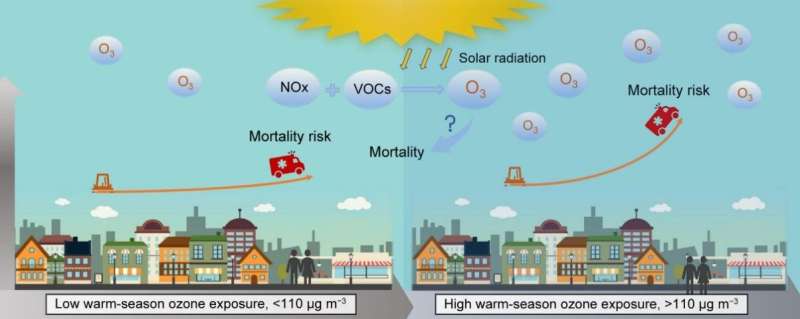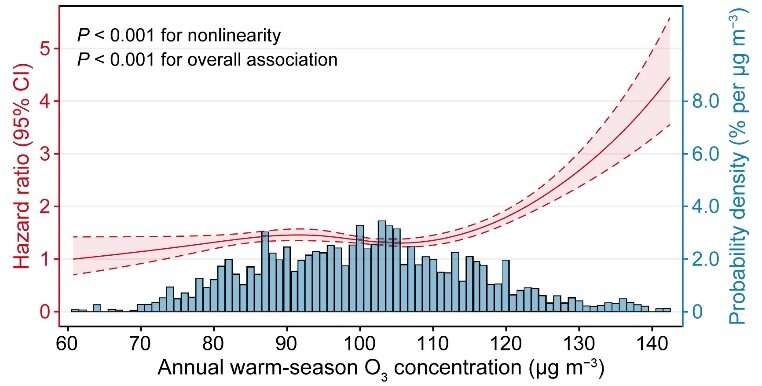This article has been reviewed according to Science X's editorial process and policies. Editors have highlighted the following attributes while ensuring the content's credibility:
fact-checked
proofread
High ozone exposure linked to increased mortality: New insights from a comprehensive Chinese national cohort study

In a new study published in Environmental Science and Ecotechnology, researchers from Wuhan University of Science and Technology revealed that even a modest increase of 10 μg m−3 in O3 concentration was associated with a hazard ratio of 1.18 for all-cause mortality, indicating an 18% higher risk of death.
The investigation encompassed a robust cohort of 20,882 participants nationwide and spanned a comprehensive seven-year period from 2011 to 2018. An intriguing aspect of this study is its particular focus on warm-season O3 exposure, which, despite the implementation of the Air Pollution Prevention and Control Action Plan in 2013, remains a significant concern in China.
Furthermore, the relationship between long-term O3 exposure and mortality risk exhibited a J-shaped pattern, implying a non-linear association with a potential threshold of O3 concentration. A crucial discovery highlights that people in colder climates face heightened mortality risks due to long-term O3 exposure.
This underscores the necessity of considering geographical and climate factors when assessing the health impacts of air pollution. The study also revealed a notable regional discrepancy, with China exhibiting higher risk estimates than recent estimates from Europe and North America. These variations could be attributed to variances in exposure metrics, population susceptibility, and generally lower O3 concentrations in developed nations.

However, it is essential to note that despite the significant findings, the study had certain limitations. The assessment of O3 exposure was based on data at the city level rather than individual-level exposure
Furthermore, the study did not consider factors such as indoor O3 exposure and potential unmeasured confounders (e.g., traffic noise or other climatic factors). Additionally, the lack of clinical diagnoses regarding the cause of death restricts the exploration of associations between O3 exposure and cause-specific mortality.
More information: Yang Yuan et al, Excess mortality associated with high ozone exposure: A national cohort study in China, Environmental Science and Ecotechnology (2023). DOI: 10.1016/j.ese.2023.100241





















